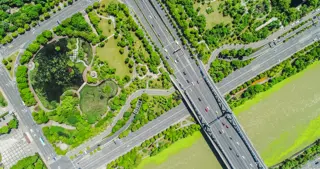Why Bangalore’s Suburban Corridors Are Redefining Urban Expansion
 The outskirts of Bangalore are no longer sleepy, peripheral zones—they’re becoming dynamos of growth, fueled by transformative infrastructure projects and visionary urban planning. As the Namma Metro pushes further into uncharted territory and suburban rail networks take shape, these corridors are emerging as prime real estate markets. Here’s your guide to navigating the most promising peripheries.
The outskirts of Bangalore are no longer sleepy, peripheral zones—they’re becoming dynamos of growth, fueled by transformative infrastructure projects and visionary urban planning. As the Namma Metro pushes further into uncharted territory and suburban rail networks take shape, these corridors are emerging as prime real estate markets. Here’s your guide to navigating the most promising peripheries.
Emerging Suburban Corridors to Watch
The Greater Bengaluru Integrated Suburban Project, approved in January 2025, is redefining 'periphery'. Key focus areas include:
- Devanahalli-Nelamangala-Kengeri Corridor: Targeting aerospace and industrial hubs, with upgraded road networks and suburban rail connectivity.
- Hoskote-Doddaballapur-Magadi Corridor: Emphasizes mixed-use development for tech parks and residential zones, leveraging proximity to the Peripheral Ring Road.
- Bidadi-Yelahanka-Karnataka Industrial Area Corridor: Prioritizes smart city initiatives, blending green spaces with commercial infrastructure.
These corridors prioritize decentralized urbanization, creating self-sustaining nodes that mirror the success of earlier growth areas like Kengeri (where property prices now exceed ₹4,000/sq.ft).
Infrastructure Overhaul: The Catalyst for Suburban Boom
The Bangalore Metro and suburban rail projects form the backbone of this transformation:
- Namma Metro Phases 3 & 4: Expanding coverage to 314 km by 2025, with new lines like Hebbal-Sarjapur and Magadi-Kadabagere addressing last-mile connectivity challenges.
- Suburban Rail Network: Corridor-2 (Chikkabanavara-Yeshwantpur) will be operational by December 2025, offering a 7.4-km prototype for future commuter-focused rail expansion. Despite land acquisition hurdles (e.g., 28.56 acres private land required for Corridor-2), progress remains steady.
- B-SMILE Initiative: A ₹7,000 crore road, flyover, and drainage upgrade program addressing chronic traffic and infrastructure gaps.
Real Estate Trends: What Buyers Need to Know
Investors and homeowners are already capitalizing on these trends:
- Priority Areas for Development:
- KG Layout: GBA-led road and utility upgrades are transforming this zone into a modern suburb.
- Sarjapur-Hebbal Corridor: Upcoming metro expansion and planned tech parks drive demand for plotted developments and mid-range apartments.
- Bidadi: Industrial townships and logistical hubs incentivize land banking strategies.
- Price Surge Projections: Analysts forecast 15-20% value appreciation in peripheral zones over the next 3-5 years, comparable to past growth in Yelahanka and Kengeri.
Strategic Buying Tips for Suburban Markets
When evaluating peripheral properties, prioritize:
- Proximity to Planned Infrastructure: Metros, flyovers, or proposed suburban rail stops.
- Developer Reputation: Builders like the Sanjeevini Group target metro-adjacent zones for new projects
- Zonal Regulations: Verify GBA-approved plans for commercial/residential land-use allocations.
- Return-on-Investment: Favor areas with expressed government commitment to utilities (e.g., upgraded drains, power supply in KG Layout).
The Road Ahead: Risks and Opportunities
While promise is palpable, consider these factors:
- Execution Risks: Delays in land acquisition for rail projects (e.g., Corridor-4 requires 160.56 acres, of which 40.29 acres is private) could impact timelines.
- Traffic Pressures: Despite metro expansion, road congestion remains a challenge, necessitating cautious location decisions.
- Sustainability Focus: GBA’s emphasis on green infrastructure (upgraded drains, parks) bodes well for eco-conscious buyers.
Conclusion: Timing Your Move
Bangalore’s suburban corridors are at an inflection point—where planned infrastructure intersects with escalating demand. For investors eyeing high-growth areas, 2025 presents a unique window to enter emerging markets before prices surge. Focus on zones with tangible metro/suburban rail commitments and new projects.